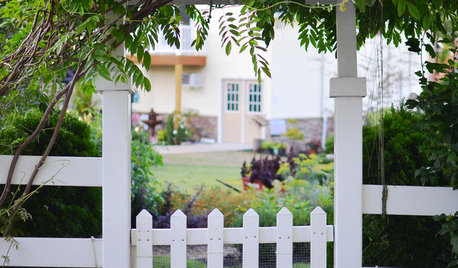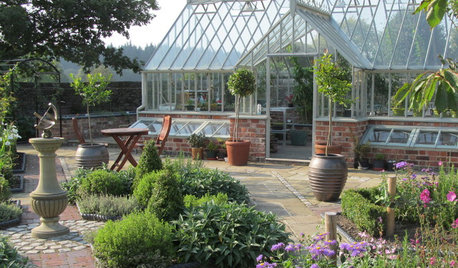Starting a New Garden Plot
rudymegan
15 years ago
Related Stories

GARDENING GUIDESGarden Tour: A Ravaged Plot Emerges as a Showpiece
From natural disaster to natural beauty, this suburban Pennsylvania garden recovered in style
Full Story
GARDENING GUIDESWindy English Plot Becomes a Kitchen Garden
A garden in Derbyshire’s Peak District combines practical elements and beautiful design
Full Story
GARDENING GUIDES6 Steps to Get a Garden Off to a Glowing Start
Grow a lush, balanced garden from an empty patch of yard or neglected landscape spot with these easy-to-follow guidelines
Full Story
GARDENING GUIDESHow to Stop Worrying and Start Loving Clay Soil
Clay has many more benefits than you might imagine
Full Story
FARM YOUR YARD6 Things to Know Before You Start Growing Your Own Food
It takes time and practice, but growing edibles in the suburbs or city is possible with smart prep and patience
Full Story
LIFERetirement Reinvention: Boomers Plot Their Next Big Move
Choosing a place to settle in for the golden years? You're not alone. Where boomers are going and what it might look like
Full Story
MOST POPULARHow to Start a Cool-Season Vegetable Garden
Late summer and late winter are good times to plan and plant cool-season crops like salad greens, spinach, beets, carrots and peas
Full Story
GARDENING AND LANDSCAPINGCitrus 101: Start Your Own Backyard Orchard
This Earth Day Weekend, Add Some Green, Style and Deliciousness to Your Landscape
Full Story
GARDENING GUIDESSeeds or Seedlings? How to Get Your Garden Started
Growing delicious herbs and vegetables starts with knowing your goals and when you want to plant
Full Story
GARDENING GUIDES10 Tips to Start a Garden — Can-Do Ideas for Beginners
Green up your landscape even if you're short on time, money and knowledge, with these manageable steps for first-time gardeners
Full Story

brendan_of_bonsai
gardenlen
Related Professionals
Camas Landscape Architects & Landscape Designers · Ferndale Landscape Architects & Landscape Designers · Hershey Landscape Architects & Landscape Designers · East Hanover Landscape Contractors · Galveston Landscape Contractors · Mesa Landscape Contractors · Oak Forest Landscape Contractors · Pine Hills Landscape Contractors · Point Pleasant Landscape Contractors · Salem Landscape Contractors · Wickliffe Landscape Contractors · Oxon Hill Landscape Contractors · Charlotte Siding & Exteriors · Benicia Solar Energy Systems · New Canaan Solar Energy SystemsrudymeganOriginal Author
marshallz10
rudymeganOriginal Author
marshallz10